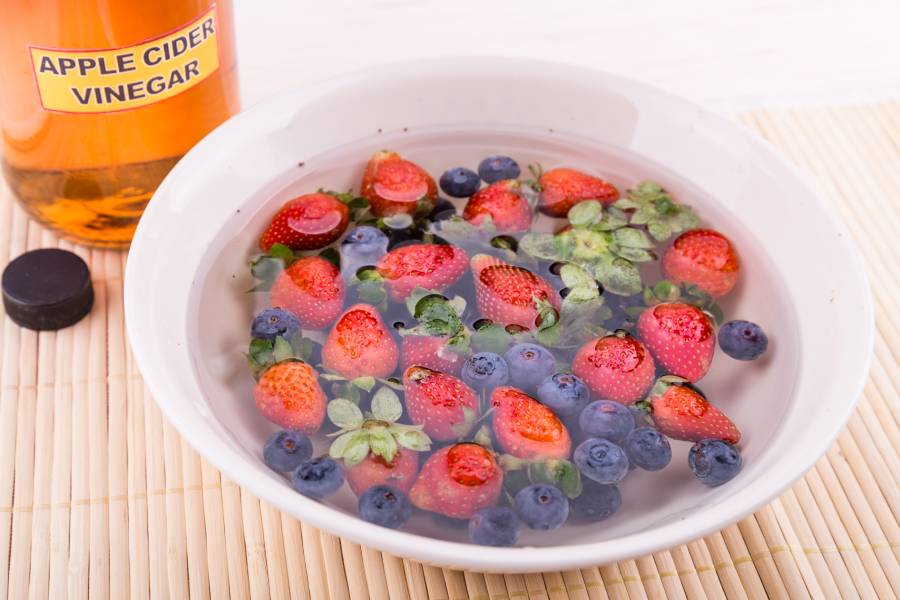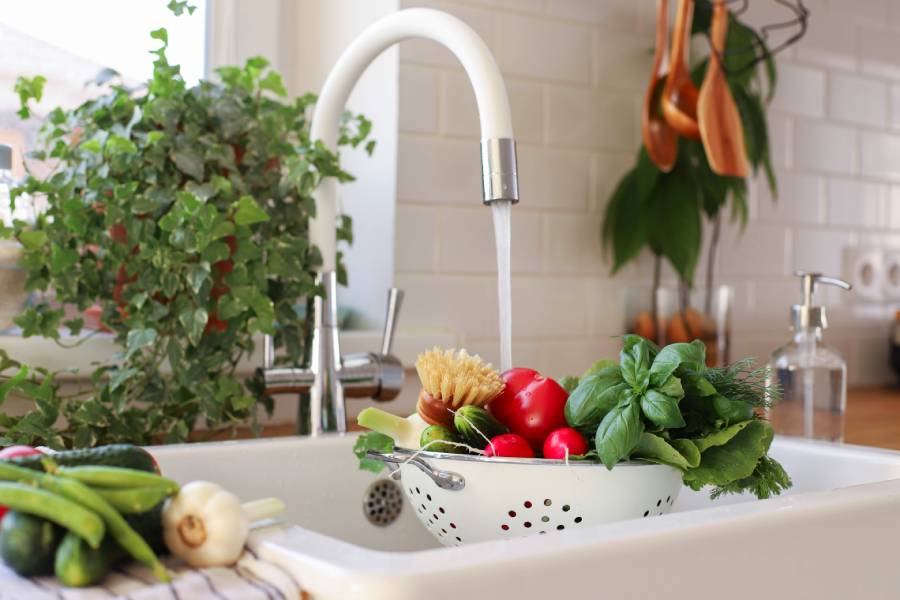How to Properly Wash Fruits and Vegetables — And Do You Really Need Special Produce Wash?
Many fresh fruits, vegetables, and leafy greens can carry pesticide residues and harmful bacteria like Salmonella, E. coli, and Listeria monocytogenes—all of which can cause foodborne illness.
Are Commercial Produce Washes More Effective?
You’ve probably seen products that promise to “remove 99% of contaminants” from fruits and veggies. But here's the catch: there’s no publicly available research to back those claims—at least not on the manufacturers' websites or from independent sources.
According to the U.S. Food and Drug Administration (FDA), consumers should not use commercial produce washes. The FDA also warns against using soap or household cleaning products to wash fruits and vegetables. Many produce items have porous surfaces, which can absorb these substances—potentially leading to nausea or other side effects.
The Most Reliable Method: Rinse with Tap Water
Multiple studies have shown that plain cold tap water is just as effective—if not more so—than produce washes for removing pesticide residues and some surface bacteria.
A Connecticut Agricultural Experiment Station study (2000) tested lettuce, strawberries, and tomatoes. It found no significant difference between washing with water alone and using a commercial produce wash.
A three-year study that rinsed produce like tomatoes, spinach, and apples under cold tap water for 15 to 30 seconds (with light scrubbing) found this was very effective at removing pesticide residues.
Researchers at the University of Maine found that rinsing blueberries in distilled water reduced microorganisms as effectively as specialty fruit-and-veggie washes.
A University of Georgia study showed that washing produce (including tomatoes, broccoli, melons, spinach, and green onions) under running water for 15 seconds was as effective—and sometimes more effective—than using commercial gels like Veggie Wash to reduce levels of E. coli, Salmonella, Listeria, and other pathogens.
Important caveat: washing produce won’t remove all bacteria. For example, one study found that rinsing romaine lettuce contaminated with E. coli under running water for 20 seconds did not significantly lower the bacteria levels.
Still, most research shows that proper rinsing greatly reduces the risk—and it's always recommended before eating.
Are Vinegar or Baking Soda Better Than Water?

Some people swear by homemade produce rinses—like vinegar or baking soda solutions—but how do they actually compare to plain tap water?
Baking Soda
One study found that a baking soda solution was slightly more effective than water at removing pesticide residues from apples.
However:
- The test did not include scrubbing or rubbing
- It required soaking the apples for 12–15 minutes in the solution
- The results applied only to surface-level residues—not deeply absorbed pesticides
So yes, baking soda may help a little, but only under very specific conditions that most people don’t use at home.
Vinegar
Despite its popularity, there’s no strong evidence that vinegar is better than water at removing pesticides.
And while both vinegar and baking soda have antibacterial properties, research doesn’t support the idea that they’re more effective than water in getting rid of bacteria from produce surfaces.
One study showed that soaking contaminated lettuce, tomatoes, apples, and broccoli in a 5% vinegar solution for 2 minutes—followed by a 15-second rinse—was no more effective than rinsing with plain water.
Practical Tips for Washing Fruits and Vegetables
Here’s how to clean produce properly—based on science, not marketing:
Wash Right Before Eating
Don’t wash fruits and vegetables before storing them. Moisture accelerates spoilage and promotes bacterial growth. Clean them just before you're ready to eat or cook.
Wash Your Hands First
Use soap and warm water to wash your hands for at least 20 seconds before and after handling fresh produce.
Trim and Rinse Thoroughly
- Cut away bruised or damaged areas before washing
- Remove outer leaves from leafy greens like lettuce or cabbage
- Rinse under cool running water for 30 seconds to 1 minute
- Gently rub with your hands or a produce brush—even for items you plan to peel, like melons or citrus
Match Water Temperature
According to researchers at Colorado State University, rinse water should be no more than 10°F colder than the produce. That helps prevent bacteria from being pulled into stems or florets.
Dry Thoroughly
After washing, dry produce with a clean towel or paper towel. This simple step can help remove any remaining bacteria and moisture that contributes to spoilage.
Final Thought
Fruits and vegetables aren’t sterile—and that’s perfectly normal. Their surfaces may carry traces of dirt, pesticides, or bacteria, but most of these can be reduced with proper washing.
Research consistently shows that the most reliable method is also the simplest:
Rinse under running tap water while gently rubbing with your hands or a soft produce brush.
Vinegar, baking soda, and commercial produce washes haven’t demonstrated any clear advantage over water. You can use them if you prefer, but don’t expect significantly better results.
At the end of the day, it's not about what you use—it's about how you wash.
Simple, consistent habits go a long way in making your produce safer and cleaner to eat.
